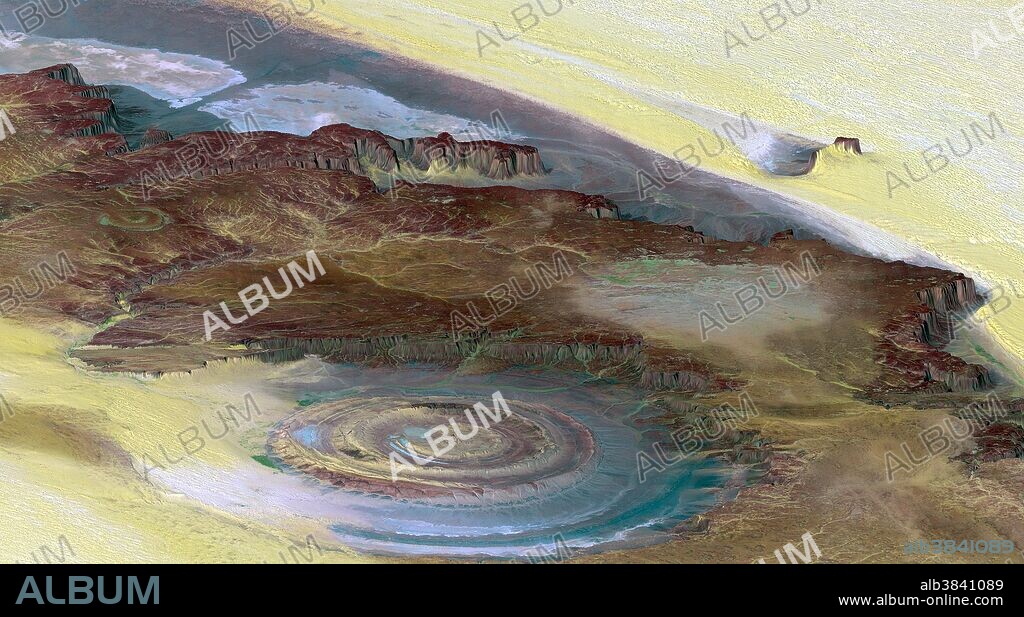alb3841089
Richat Structure, Sahara, Landsat / SRTM Image

|
Ajouter à une autre Lightbox |
|
Ajouter à une autre Lightbox |



Avez-vous déjà un compte? S'identifier
Vous n'avez pas de compte ? S'inscrire
Acheter cette image.
Sélectionnez l'usage:

Titre:
Richat Structure, Sahara, Landsat / SRTM Image
Légende:
Voir la traduction automatique
This prominent circular feature, known as the Richat Structure, in the Sahara desert of Mauritania is often noted by astronauts because it forms a conspicuous 30-mile-wide bull's-eye on the otherwise rather featureless expanse of the desert. Initially mistaken for a possible impact crater, it is now known to be an eroded circular anticline (structural dome) of layered sedimentary rocks. This view was generated from a Landsat satellite image draped over an elevation model produced by the Shuttle Radar Topography Mission. The view uses a 6-times vertical exaggeration to greatly enhance topographic expression. Colors of the scene were enhanced by use of a combination of visible and infrared bands, which helps to differentiate bedrock (browns), sand (yellow, some white), minor vegetation in drainage channels (green), and salty sediments (bluish whites). Some shading of the elevation model was included to further highlight the topographic features. Elevation data was acquired by the SRTM aboard the Space Shuttle Endeavour, launched on February 11, 2000.
Crédit:
Album / Science Source / NASA/JPL/NIMA
Autorisations:
Modèle: Non - Propriété: Non
Questions sur les droits?
Questions sur les droits?
Taille de l'image:
2259 x 1244 px | 8.0 MB
Taille d'impression:
19.1 x 10.5 cm | 7.5 x 4.1 in (300 dpi)
Mots clés:
AÉRIEN • AFRIQUE • DUNE • DUNES DANS UN PAYSAGE • GEOLOGIE • PAYSAGE AVEC DUNES • SAHARA • TOPOGRAPHIE • VEGETATION
 Pinterest
Pinterest Twitter
Twitter Facebook
Facebook Copier le lien
Copier le lien Email
Email
